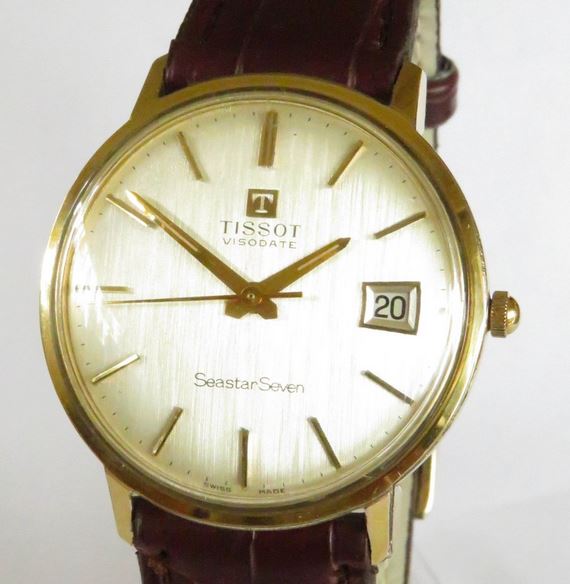Last Updated on April 10, 2024 by Jason
Tissot was founded in 1853 by Charles-Félicien Tissot (1804 – 1873) and his son Charles-Émile Tissot (1830 – 1910) in the Swiss municipality of Le Locle, in the Neuchâtel canton of the Jura Mountains area. The pair worked out of a small workshop attached to the family home. Initially, they worked as comptoirs or watch finishers, assembling watches with components sourced from local manufacturers. This was known as the établissage system whereby they purchased ebauches (blank movements) and assembled the watches. Charles-Félicien worked as a casemaker and Charles-Émile the watchmaker. Together, they assembled pocket watches, specialising in those with gold or silver cases.
Charles-Emile Tissot toured Russia in 1858 and succeeded in securing a market for their savonnette pocket watches across the Russian Empire. In 1865, the company changed its name for the first time to Tissot & Fils. In the late 1800s, Tissot was the recipient of numerous awards and prizes in several industrial exhibitions. Among the prizes awarded were the Diploma of Honour in Zurich in 1888, the Grand Prix and Gold Metal in Antwerp in 1890, the Grand Prix in Paris in 1900, and First Prize for Chronometers and for Marine Chronometers in the Neuchâtel Observatory Competition in 1907.
In 1915, the company began to produce their own movements for the first time, which included wristwatches. In 1917, during WW1, the company changed its name again to Tissot & Fils SA. Tissot merged with watch companies Omega SA and Lemania in 1930, forming SSIH (Société Suisse pour l’Industrie Horlogère). Despite the merger, Tissot and Omega maintained separate brand identities and continued producing watches under their respective names. Although, early on in the partnership, some watches were made with both names on the dial.
In 1938, Tissot’s became an official timekeeper of a series of ski races in Villars-sur-Ollon, near the company’s home town in the Jura mountains. Ever since, Tissot has been actively involved in sports sponsorships and partnerships. They became the official timekeeper for various sporting events, including the MotoGP, Tour de France, and FIBA basketball tournaments.
In terms of innovation, Tissot produced the first mass-produced pocket watch with two time zones in 1858, which was a significant advancement at the time. Tissot also produced the first pocket watch featuring an antimagnetic system in 1929.
The Tissot Camping model was first introduced in the late 1930s. The name Camping was given to suggest its suitability for a rugged outdoor life. Tissot released the first mass-produced watch to feature 24 time zones, the Tissot Navigator, in 1953. The Tissot Seastar is a water resistant watch, although they are frequently labelled as waterproof. The Tissot Seastar story spans from the 1960s up until today. They were produced in high volumes, in a wide range of models, There’s the Seastar Seven, the Visodate, the T12 and chronographs. Most models had a date complication and, among those, the 1970s models often had a quick date-set function. The models came in hand wound and automatic movements. Typically the movements were in-house, such as the 782-2 (manual) or the 784-2 (automatic).

In 1965, the brand launched the Tissot PR 516, which was inspired by the motor racing industry. The bracelet on the watch contained holes which mimicked those on the steering wheel of a race car. Technically, the model was very rugged. The PR 516 was highly protected against both axial and lateral shocks, due to its suspended movement. The PR in the Tissot PR 516 means “Particularly Resistant”.
In 1983, the SSIH merged with ASUAG to form the Swatch Group, which became one of the largest watchmaking conglomerates globally. Tissot remains a part of the Swatch Group to this day, producing watches at the entry level of the luxury watch market.
Leave a Reply